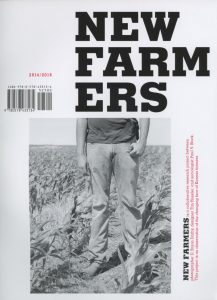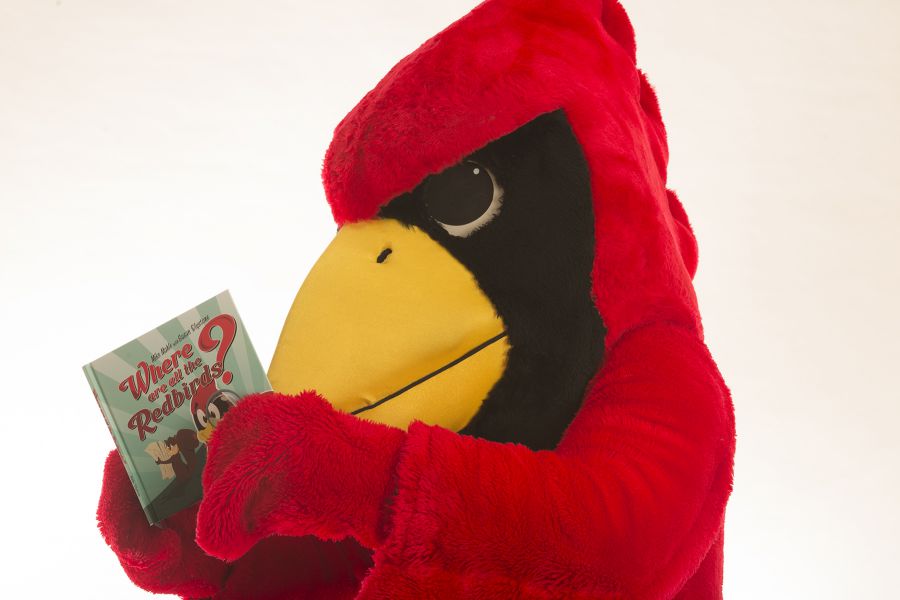Illinois State is proud to be able to acknowledge the work of graduates who are successful authors.
Appears InIf you’ve written a book that has been released by a publishing house within the past decade, submit it for review by Professor Emerita of English JoAnna Stephens Mink ’73, M.S. ’75, D.A. ’85.
Please send your book to Illinois State editor Susan Blystone at Illinois State Alumni Center, 1101 N. Main Street, Normal, IL 61790. Inquiries can be sent to sjblyst@IllinoisState.edu.
 A Dreadful Fairy Book
A Dreadful Fairy Book
Jon Etter and Quentin Q. Quacksworth. Eagle, Idaho: Amberjack Publishing, 2018. 300pp.
Summary: A Dreadful Fairy Book is John Etter’s debut novel and the first in a planned trilogy directed toward middle school children aged 8 to 12. In this book, Quentin Q. Quacksworth reluctantly narrates the tale of a grumpy, bookish fairy who grudgingly goes on an adventure to find an elusive library. Shade, the protagonist, encounters characters from whom she learns important life lessons about loss, betrayal, magic, and friendship. In her quest, Shade meets characters named the likes of Pyrite, Spratling, and Grunch—names that should delight middle school children.
Early in her journey, Shade comes to the Crooked Rook’s tavern: “Fairies of all sorts—goblins, hobgoblins, pixies, brownies, kobolds, dwarves, knockers, elves, a couple [of] cats wearing hats and boots, and many others—sat in dim lantern light on rickety seats around battered tables or stood by the fire, drinking strong-smelling things out of scabby leather mugs.” Etter’s audience should enjoy this mix of familiar and unfamiliar fairies, and the borderline naughty details that follow: “The scars that most of them sported and the foul language they used (almost immediately upon entering, Shade heard every rude word she had ever known plus seven more) made Shade uneasy, but she remembered one of Radishbottom’s travel tips: ‘When entering an unfamiliar tavern, always act completely at ease, and when staying at an unfamiliar inn, always haggle over the price of a room’” (53-54).
This combination of realistic and imaginative details should engage middle school readers, and they may not even be aware that they are learning how to navigate the world of moral dilemmas.
The relationship between Shade and Quentin presents an interesting dynamic: “With an exasperated narrator who would much prefer a story whose fairies and plots behave the way they ought and with characters that not only question, but outright shatter, the status quo to embrace difference,” Etter’s novel offers “a rich world of complexity and moral ambiguity” (Kirkus Reviews).
Thus, A Dreadful Fairy Book can be viewed as a metanovel, that is a novel about the relationship between the narrator and the world he presents, which goes beyond surface level plot and character. The inner novelist (the narrator in this case) “perceives while he is perceived, creates while he is created, and has free will while he is created” by the author (David Henry Lowenkron, The Metanovel, College English 38.4 [1976]). Etter, therefore, creates an almost dissonant relationship between his protagonist (Shade) and the person providing and interpreting Shade’s story (Quentin).
Note: Summary based on uncorrected proof copy.
About the Author: Jon Etter ’96 teaches high school English in Wisconsin. A Dreadful Fairy Book is the winner of the 2019 Eric Hoffer Award (Middle Reader Category) and the 2019 Eric Hoffer First Horizon Award for Debut Books.
 New Farmers 2014/2018
New Farmers 2014/2018
Paul V. Stock et al. Lawrence: University Press of Kansas, 2019. 96pp.
Summary: Illinois State alum Paul V. Stock wrote the commentary and interviews that link D. Bryon Darby’s photographs and Tim Hossler’s design in New Farmers 2014/2018. This book was named among the 50 best books and 50 best book covers of the year by Design Observer and AIGA, the professional association for design.
There is not much text in this coffee table-size book, and most of that text is in very large font. But they are powerful words, indeed. In many ways, the stunning black-and-white photographs tell the story of today’s farmers in Kansas. The images resonate beyond Kansas. Many of the scenes could be in Illinois or another Midwestern state. Photographs are inspired by Great Depression era photographers Dorothea Lange and Walker Evans.
The size of this book is significant. People stare from the page and one can’t help but become engrossed in their lives, albeit a different lifestyle altogether. One of this reviewer’’ favorite is John Beauman with his gray beard and wire-rimmed glasses and straw hat, yet his eyes peer courageously toward something outside the frame. Another favorite depicts Tom and Jenny Buller, a modern version of Grant Wood’s American Gothic.
Stock became interested in this collaborative project when he returned to the Midwest after spending years in New Zealand studying how that country moved from primarily sheep farming to dairy farming. His academic background in sociology and Darby’s expertise in photography led first to collaborative gallery exhibitions and then New Farmers 2014/2018. Stock’s contribution to this monograph is the engaging text, derived from interviews he conducted with many farming families. His commentary links the men, women, and children whose faces speak from the pages.
The focus of New Farmers 2014/2018 is farmers—and their families—who are entering into farming despite the many pressures facing international agriculture. Some have been farming for many years, but are trying new techniques. In his concluding essay, Stock explains what the project is about: “wrestling with what is a farmer? What is community? […] If farming is simple drudgery, […] why are people moving to and starting farms?” Phil Holman-Hebert, pictured sitting on the stoop of his house on Sweetlove Farm, asserts, “The truth is, farming is so bloody romantic you can’t escape it.”
About the Author: Paul Stock, M.A. ’04, is an associate professor in the sociology and the environmental studies program at the University of Kansas. He is the editor of Food Utopias: Reimagining Citizenship, Ethics and Community, as well as Food Systems Failure.
Boss Broad and Straight into Darkness: One Tom Petty Redemption Song
Megan Volpert. Little Rock, Arkansas: Sibling Rivalry Press, 2019. 238pp.
Megan Volpert. McLean, Virginia: Miniver Press, 2018. 155pp.
Summary: Boss Broad contains 40 poems and dozens of essays that explore what it takes to be a middle-aged hero. The poems are English-to-English translations of Bruce Springsteen’s popular songs where he directly addresses a female listener, which Volpert rewrites using the Boss’ rhyme and meter. Thus, Rosalita becomes a drag queen, Wendy captains her own ship, and Bobby Jean finally comes out of the closet.
Volpert explains in a May 2019 interview with ARTS ATL, “English-to-English translations are having a bit of a resurgence, and I thought it would be a good time to do something with rock music—like in a ‘Weird Al’ Yankovic way, but more strict in form and also more political. At the same time, Springsteen had a lot going on […], so I knew there would be timely material to consider, in addition to the very wide and deep resources generated by his long career.”
She continues: “And then personally, I’ve always had mixed feelings about the Boss. Some of his work has been a salve to me, but some of it has also seemed to ignore lives like mine. I had enough ambivalence about him that I felt sure I could just go in the varying ways my heart led me and the results would be pretty interesting.” The embedded essays examine injections of spirituality in progressive politics, her career as a punk high school English teacher, what she learned surviving hurricanes in Louisiana, and meditations on what it means to be a cool liberal.
“Straight Into Darkness illuminates the truths and myths of a culture, a band, a man, and their lasting impact on generations of listeners,” says Steve Luthye, keyboardist for Petty Theft Dallas (qtd. from Amazon.com). The book is a collection of essays about Tom Petty’s “Straight into Darkness” (1982). Volpert invites the reader to skip around since each is a self-contained unit. They are organized into six “different tools for approaching the song—personally, musically, historically, rhetorically, sociologically, and philosophically” (Introduction). It certainly is unusual to have an entire book written about one song, and Volpert’s approach is innovative and illuminating.
The Table of Contents is divided into parts: Album Context, Song Lyrics, Song Composition, Mob Scene, Final Tour, Standards, plus a short Epilogue. An impressive 41-page Endnotes section demonstrates that Volpert’s purpose is thorough and serious. The layout is interesting too, with each page having 2-inch margins and 2.5 inches of text, presenting an effect of concentrated narrative. One reviewer opines that Volpert mixes “just the right amount of academic rigor and total Petty obsessive in this illuminating book,” and these details reinforce that observation. Straight Into Darkness is an in-depth and exhaustive exploration that will engage anyone interested in Tom Petty, his work, his life, and his milieu.
About the Author: Megan Volpert ’03 has taught high school English in Atlanta for more than a decade and was named Teacher of the Year in 2014. She is the author of many books on communication and popular culture, including two Lambda Literary Award finalists. Volpert edited the American Library Association-honored anthology This Assignment Is So Gay: LGBTIQ Poets on the Art of Teaching. She is co-editor of RuPaul’s Drag Race and Philosophy. (2020). Closet Cases: Queers on What We Wear is forthcoming from Et Alia Press.



